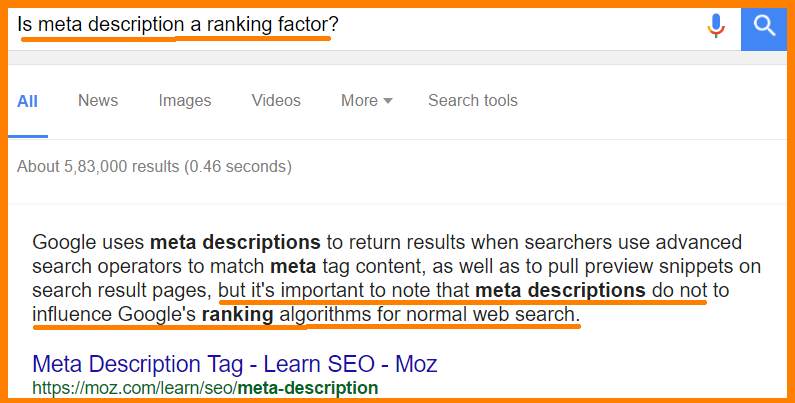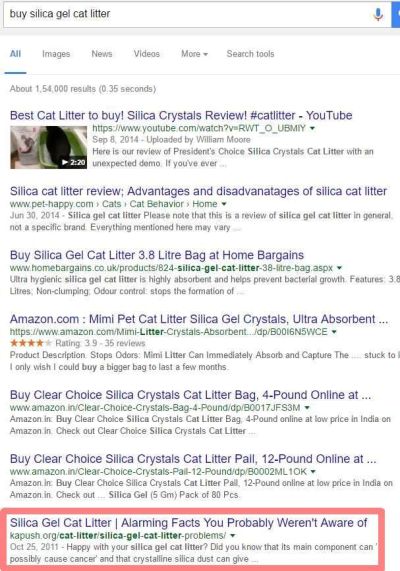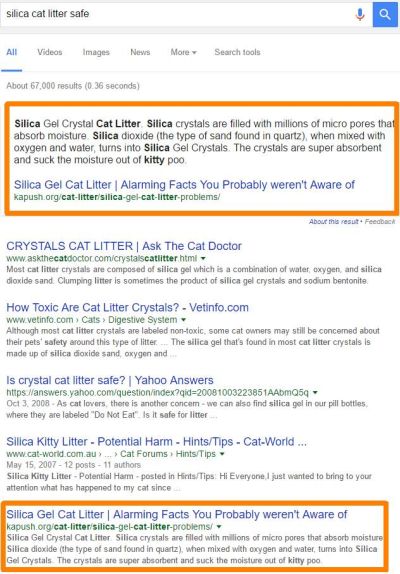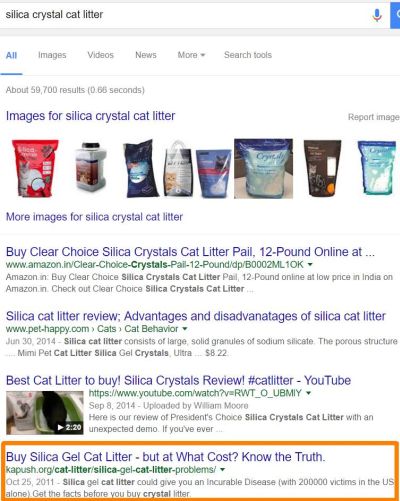Case Study: Is Meta Description a Ranking Factor? | KapushContenT
Categories Meta Description, SEO Content Writing
Most people know that an SEO Title is a ranking factor. Contrary to popular perception, however, it appears that Meta Descriptions can and do rank you directly as well. They are not important only to get people interested enough to click your link on SERP following which you slowly rise in rank.
The truth is, using the title and the meta properly, you can target specific keywords and rank for them.
And if you can figure out the perfect meta description, rest assured, Google will not create its own. Not even when you show up on search results for a number of different (but related) keywords and phrases.
As of now, I have no way of knowing if I can replicate what I did. But if you believe it is possible (after seeing the proof), you can work on it and see for yourself how far you get.
The story in brief
This is about an article I wrote way back in 2011. It was (and still is) on a blog that contained all of six posts one of which was just a list of items with description, with a bit of an introduction. The overall on-site SEO was good and the articles were well researched.
The blog drew traffic even though I never touched it until now, almost six years later. Not huge traffic, but regular traffic, and comments.
Originally, the length of this article was about 900 words. Back in the day, 900 word articles were like cornerstone stuff for the average blog. It kept ranking through all those years till I changed domain. After that, there was the usual dip in traffic as I vanished from the first page of Google SERP.
The dip was overcome in about 5 weeks. I dare say this could have been achieved sooner had my efficiency not been drastically reduced following an injury. But that is a different story.
Initial status
I noticed, quite by accident, that in August 2016, the article in question was ranking for buy silica gel cat litter – but at the 7th position.
This was a pleasant surprise, because it wasn’t supposed to.
The article wasn’t optimized for a commercial keyword like buy. That word wasn’t in the URL, nor was it in the SEO title or the meta description, and I certainly didn’t sprinkle it in the text.

The challenge
Rank among the first five results on Google SERP for the commercial key-phrase buy silica gel cat litter.
Position at the time
Ranking for a number of variations of the query silica gel crystal cat litter plus being featured in the coveted snippets in search.

Unfortunately, in spite of the obvious privilege of being Featured, my ranking wasn’t high enough.
Setting targets
- Rank higher up where Featured already
- Rank higher up for buy keyword
- Rank further for crystal in the key-phrase to include even more related queries
Step 1: Changing the SEO Title
This was the original SEO title and meta description:

After quite a few tries I changed it to Buy Silica Gel Cat Litter – but at What Cost? Know the Truth.
I used this free tool to check if the new title was going to be okay. It took a number of tries, but in the end, was totally worth the time and effort.
Step 2: Changing the Meta Description
This was trickier – no tool is good enough, and you have to use your common sense. I had to include both buy and crystal in a natural flow of language and make the description look interesting enough for clicks.
To retrieve my earlier rankings, I had enhanced the original article considerably, and now used the new information to create the description.
I really regret not having measured exactly how many days it took for me to rank, but believe me when I tell you it was achieved in less than a week. Lesser, actually, but let’s be conservative.
And this is how it looked, finally:

Achievements
1. Rank higher up where Featured already
As you can see, the snippet held, and the ranking climbed to … number 1 (!) for the original key-phrase silica cat litter safe (the snippet appears for a few other key-phrases as well including what is silica crystal cat litter?). And it goes perfectly well with the content of my article.

2. Rank for buy keyword with new meta description and SEO title
Yup.
Ranked at number 1 for organic results. And retained ranking for other keywords as well, which the article was already good for.
Note how the word buy appears in bold in the meta description.
I had wanted to rank for the buy keyword so that people thinking of buying silica cat litter would find my article explaining its harmful effects.

3. Rank further for crystal to include even more related queries
Done. Ranked among the first five, at number 4.
I say ‘further’ because the article was already ranking for a few queries with the word crystal in them.
Note, again, the word crystal appears in bold in the meta description. I could have included the word in SEO title as well, but wanted to find out how powerful a ranking factor the meta description was. Powerful enough, it would appear.
What if I had NOT put the buy keyword in the SEO title? Would the description have been enough to achieve a first position ranking?
I didn’t think so. Which is why I didn’t even try. Ranking for a keyword with commercial intent takes all you got.
The Takeaway
This little experiment (‘Case Study’ sounds good, though) illustrates only a part of the story.
There were too many factors at play, like search volume, keyword competition, domain and page authority of competing sites, as well as authority of the article in question (it was already ranking for a number of related keywords).
That is to say – ranking for a new keyword isn’t as simple as changing a few words here and there.
But, it jolly well can be done.
If your site is otherwise optimized, it can be done.
And one more thing …
If you wish to find the true competitive and commercial value of any keyword, don’t bother with keyword research tools. Look at the SERP itself. Is the query throwing up advertisements? If people are spending money on a query, it has commercial value.
Look at the sites that are already outranking you for the keyword. Are they big commercial names? That would indicate a high content marketing budget with premium quality SEO content writing services. And there would be the established authority of a sprawling site. Competition would be particularly stiff.
For a keyword or phrase that has the word buy or purchase in it, your competitors will invariably be businesses. And businesses do not only show up on sponsored or paid results – they invest in ranking organically as well especially since Inbound marketing is on the rise.
Check the larger version of the original screenshot to get what I am trying to say – take note of the first six results.
In this case, Amazon and YouTube were among the sites I had to push down to get to the number one position.
Note: All searches were conducted incognito to avoid personalized results.
What do you think?
Have you ever experimented with the SEO Title and the Meta Description? Do you intend to? Please feel free to share your thoughts in the comments.
